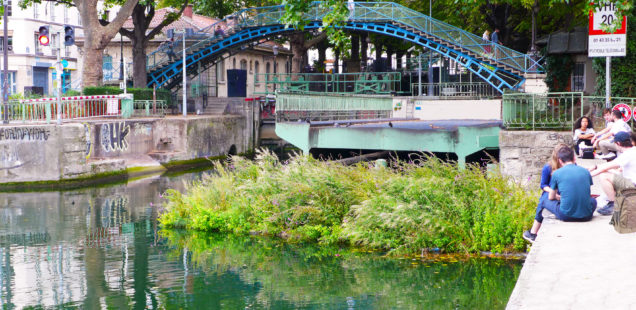
Biodiversity in cities – France
The recently published Living Planet Report from the WWF shows clearly that biodiversity – the rich diversity of life on Earth – is being lost at an alarming rate. The population sizes of mammals, birds, fish, amphibians and reptiles have seen an alarming average drop of 68% since 1970. « And this increasing destruction of nature is having catastrophic impacts not only on wildlife population but also on human health and all aspects of our lives », states Marco Lambertini of WWF International.
For a long time many humans had, and some still have, the conviction that the human species is standing above, or besides nature and the ecosystems. That we could change the natural environment of our planet without any consequences for our health and well being. That somehow technology could compensate the continuous degrading of our natural environment. We want fossil fuel, so we take drill holes. We want steel, so we dig holes. We want wood, so we cut trees. We want meat, so we raise livestock on industrial scale. Ignoring the well known consequences of our actions and the alerts from the scientist.
And we built our cities accordingly. High rise buildings with glass facades often need energy-intensive cooling systems to control the inside temperature. A fact the does not hinder us to built them in desert climate zones. Cities expended far beyond their historic centres, creating urban sprawl, commuting, traffic jams and increasing air pollution. Vegetation got pushed out of the cities and green spaces vanished for more parking space as more cars were invading the cities.
But humanity now see and feel the consequences of these actions. The human species are not above, or besides nature, but simply part of nature. The global degradation of nature and its suppression in the cities has a negative impact on our well being, physically and mentally. The cities we built are often not the cities, that take into account the need of all. Flora and fauna must be offered a space in the cities. The loss of biodiversity is not only a drama playing in the far away rain-forests, but also on our balcony’s and rooftops, squares and parking lots, roads and highways.
Biodiversity Strategy
The European Union recently presented its Biodiversity strategy for 2030 as a core part of the European Green Deal and with the subtitle ‘Bringing nature back into our lives’. On a more local level, the City of Paris presented in 2018 its Biodiversity plan 2018-2024. An action plan as important as its Climate air and energy plan (see Project Baikal n°62 and n°64). Both plans are complementary. For example, rising temperatures lead to heat waves during the summer months with negative impacts on the health of the citizens, especially vulnerable people. During the major heat wave in 2003 the French government counted 15000 additional deaths due to high temperatures. As measures show that a stronger presence of vegetation and especially trees in the cities reduce the temperature peak, both action plan foresee to strengthen the presence of vegetation in the city.
Besides parks and tree rows, new forms and types of urban interventions and architecture projects are now emerging with a focus on biodiversity. Most of them are prototypes and research projects to better integrate the needs of and a space for the flora and fauna. Following you will find an overview of seven recent projects in Paris, that enhance the biodiversity inside the city. Working with nature has become an obligation, being ecological and sustainable is a plus for each attractive city. These examples of green projects in the Paris metropolis go from smaller to larger projects and illustrate four categories: blue green corridors, abandoned infrastructures, public buildings and urban farming.
The location of the projects in the city of Paris
1) Green raft
2) Floating garden
3) Small belt railway
4) Recyclerie cafe
5) Primary school for sciences and biodiversity
6) Oasis school-yard
7) Urban farm
The green raft in the canal Saint-Martin
The green raft is floating in the canal Saint Martin, one of the blue corridors of Paris. A small floating garden that revitalize the banks of the canal and promotes biodiversity in, out and under the water. This innovative project is an ecological spot imagined by Katarina Dear, the founder of the association Nature & Us, and it had been put in place by the City of Paris.
The green raft has a surface of 40 m² and is made up of two main parts divided by the water surface. The visible part is composted by plants endemic to the region of Ile-de-France with a density of 15 plants by m², in total 620 plants. The second part is made up of artificial spawning grounds, hidden under the surface of the water.
In detail, the part afloat of the raft is made of recycled and recyclable materials with a coconut mat, geotextile, tube and polyethylene mesh to ensure rigidity and flotation. Underwater, different modules are filled with oyster shells that serve as habitat and food support and they alternate with empty spaces offering refuge. Natural heather bands are allowing fishes to lay eggs. The set is completed by empty mesh boxes in which young fishrs can protect themselves. This modular principle is the result of a collaboration between ‘Biomatrix Water’, a Scottish company, for the part above the water surface, and ‘Ecocean’, a French company, for the part below the water.
Made of a light structure the green raft is not accessible to the public. It is a research project to enhance the biodiversity of the canal Saint-Martin with a low budget of 20 000€. In case of success the project will probably be reproduced on other locations in Paris.
The floating garden on the river Seine
A precursor project are the floating gardens Niki de Saint Phalle near the Alma bridge on the river Seine, the main blue corridor of Paris.
The floating gardens are accessible to the public and part of the Seine river front walk. The gardens cover an area of 1800 m² and they consist of five planted islands on floating metal structures. All together they offer space for 60 trees, 280 shrubs and 3000 grasses of different sizes. Every island is vegetated differently and equipped with its own furniture: The central island is predominantly mineral; the prairie island is generously planted; the tall grass island is a hiding playground for children; the orchard island is punctuated by decorative apple trees; and the bird Island is the most densely planted and ‘wild’ of the five islands.
These floating gardens reinforce the biodiversity and help to rethink the relationship of the Parisians to their river Seine. They offer a unique, accessible and floating public space on the water. But as the vegetation is planted on floating metal structures above the water surface, the contact between the planets and the water is more limited then with the green raft and its under water modules. So the City of Paris added small green islets between the islands and the river bank. Not accessible to the public, they accommodate semi-aquatic plants to complete the floating ecosystem.
The small belt railway
From the blue corridors of the canal Saint Martin and the river Seine, we switch to a green corridor on a former railway line in Paris. The small belt railway was a 32 kilometre long railway line circumnavigating Paris within the Boulevards des Maréchaux. Most parts of this line had been closed since 1934. In the following years the railway was used only from time to time for specific functions. Today only a few smaller sections are still incorporated into the active railway network.
As the line is still legally part of the railway network, it has remained free from development and constructions. Inaccessible for the population, the railway line developed into an urban retreat for the fauna and flora: e.g. bats found a their home in the tunnels.
Since 2006, the City of Paris has made the small belt railway partly accessible. The necessary constructions are limited to the minimum and can be dismantled. The option to let rail vehicles run again on the line, whatever they will look like in the future, should remain possible. In the meantime 6.5 km have been made accessible to the public with shared gardens, small cultural gatherings and walks. For the rest, the city continues protecting the most valuable sections in terms of biodiversity as this former railway line reinforces the place of nature in the city and is home to some rare species.
La Recyclerie café
The former train stations of the small railway belt were converted after the closure of the line, partly officially, partly unofficially. If possible, they are now bought by the City of Paris and made available to non-profit associations in order to integrate them in the neighborhoods with various uses.
The former station on Boulevard Ornano had been transformed in 2014 in the Recyclerie café. The concept was to set up an experimental meeting place with a hybrid, ecologically-oriented program: partly a restaurant, a bar, a dance school, a repair shop and an urban farm. The concept is based on the 4Rs (Refuse, Reduce, Reuse, Recycle), that are four successive actions to move towards a healthier, fairer and more sustainable world. The place is experimental and the association of the Recyclerie tries every year to go further in reducing the ecological footprint of their activities and to communicate their actions. It is a place to promote the engagement of the civil society on environmental issues.
A specific program had been organized for each period of the year. From January to March: Rethinking, a period to rethink lifestyles and think about the world of tomorrow while respecting nature and biodiversity; From April to June: Reduce, a period to reduce waste and replant the city in order to achieve a zero waste lifestyle with a sustainable local consumption; From July to September: Repair, a period of restoration and repairing instead of throwing away; From October to December: Recycling: a period in order to guarantee the ecological transition.
Biodiversity take an important part in the activities of the Recyclerie. Since 2014 they are transforming a section of the small railway belt into a diversified vegetable garden, experimenting with different seeds and the introduction small livestock, as chicken and fish, for a circular food production. Today is has become a very popular place and small Garden of Eden.
Primary School For Sciences And Biodiversity
Public buildings are important anchor points in every city. Their architecture tell us a lot about the history and governance of the city. Public building have a role of exemplarity, especially school buildings, as they have a large impact of the education of the children.
The Science and Biodiversity School Group in Boulogne-Billancourt, designed by the office Chartiers Dalix, is exemplary in its exploration on the integration of nature in buildings. The building houses 18 classes (11 elementary and 7 nursery classes), a gymnasium, a school restaurant and a central school-yard. The school is conceived as an inhabited landscape in the city. It offers larger horizontal surfaces with a thick layer of soil, a green terrace and a green facade. It had been conceived as a functional ecosystem.
The green façade with its watering system and a playful relief offers the possibility of growing plants vertically. An accessible roof with a large hanging garden ensures a space for a local flora and fauna to develop in continuity with the green façade. With its elevated landscape, the building also improves the living conditions in the surrounding buildings. The presence of vegetation reduces the peak temperature in summer and gives a nice view for the neighbouring buildings.
The school of biodiversity offers the schoolchildren the possibility of a specific education, allowing them to discover and deepen their knowledge of science, nature and the flora and fauna that surround us. A new way of thinking about the city, education and nature.
The Oasis school-yards
The program of the Oasis school-yards of the City of Paris has a similar objective as the previous example by retrofitting the existing schools. In 2018 the City of Paris decided with a financial contribution of the European Union to experiment the transformation of several school-yards into green spaces. A project that should end in 2050 with a complete renovation of all school-yards in Paris.
School-yards had become in the previous decencies mainly concrete surfaces with eventually a few trees. Mineral surfaces with few shade that heat up quickly in direct sunlight and offer a harsh environment for the school children. The Oasis project proposes a more playful design, more shade thanks to new trees, more vegetation, a small vegetable garden, the presence of water and natural soil allowing for a better rainwater management. And it offers the possibility to rise awareness on our intimate relationship and necessary respect for nature. In each school school children and the adults work together on the transformation of their school-yard for a better distribution of the space and a friendly, natural environment. School-yards are social microcosm. Their layout and use can convey civic and republican values, the respect for the environment and the living together.
And there is a second aspect of the program. The Oasis school-yards represent more than 70 hectares of surface area in Paris and they are distributed evenly over the territory. Until now they are closed to the public even when the schools are empty, like on public holidays and weekends. The Oasis program foresees to intensify the uses of this new green spaces. During summer the new designed school-yards can open to the public and become a refuge and meeting place for vulnerable people during peak temperatures. By offering shade, vegetation and social contact, they offer a moment of rest during the hot days of the year.
An urban farm of 14000 m² on a rooftop
On a larger scale, the biggest urban farm in Europe opened recently in Paris of the rooftop of an exhibition hall at the Porte de Versailles. It is an experimental project to test the possibility and capacities to grow food on larger urban rooftops.
Implemented on 14000 m² above the exhibition hall, weight becomes a major subject. So the use of natural soil was not possible. A light structure has been implemented in order to provide a maximum of plants with a minimum of weight. The cultivation system uses two methods. The first is horizontal with gutters that are used for climbing plants. The second is vertical with hollow tubes and each tube houses about fifty strawberry plants.
Both methods limit the use of water with an enclosed system to reduce evaporation and again limit weight. The rooftop is also partly accessible to the public with its panoramic views of Paris. It offers a restaurant and a bar with the large rooftop garden. The restaurant will use mainly the products of the urban farm. Some sections of the rooftop are available for rent to cultivate your own urban garden. The fifth facade of the city, the rooftops, have been often ignored or only used for technical equipments that nobody wishes to see in the streets. But these underused surfaces offer a large potential for new uses. Gardens and urban agriculture can be one of them. The City of Paris indicated in a study of 2017 that an agriculture surface of 11000 ha would be necessary to produce fruits and vegetable for all Parisians. The 1,4 ha of the urban farm will not bring a big contribution to the supply of the Parisians, but it brings awareness on food production to the urban populations, and enriches the biodiversity.
Biodiversity
Climate change and the degrading of our natural environments are two of the major challenges of our times. And the next decade will be decisive to implement the ecological transition. Our cities have to adapt to and to contribute to our well being by integrating the needs of and a space for the flora and fauna. These seven examples a just a small sections of possibilities, but they show how the city of today could look like.
Author: Christian Horn is the head of the architecture and urban planning office RETHINK in Paris, France
The article has been published in the magazine Project Baikal n°66
Sources
Living Planet Report 2020. (2020). WWF. https://www.wwf.fr/vous-informer/actualites/rapport-planete-vivante-2020
Plan Biodiversité de Paris 2018 – 2024. (2019). Ville de Paris. https://www.paris.fr/pages/biodiversite-66
Ville de Paris. (2018). Plan Climat Énergie. Consulté à l’adresse https://www.paris.fr/pages/paris-pour-le-climat-2148/#le-plan-climat-energie-de-paris
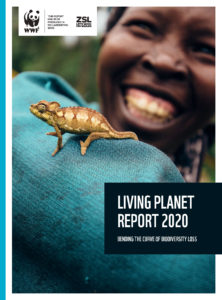
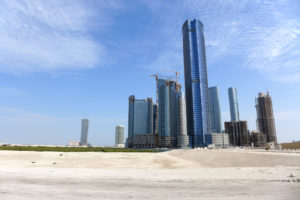
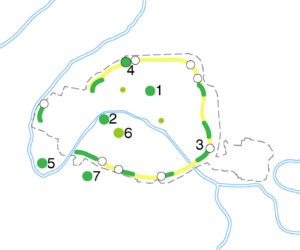
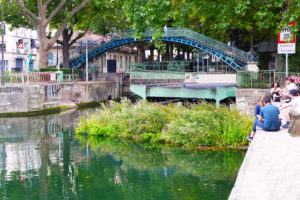
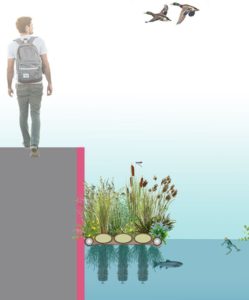
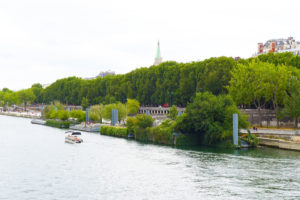
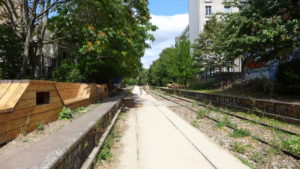
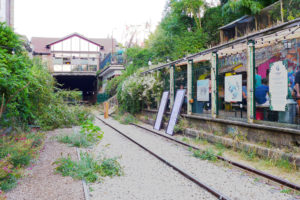
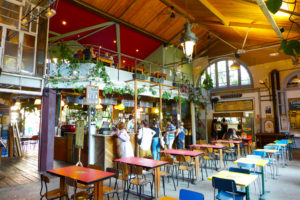
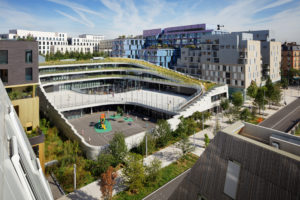
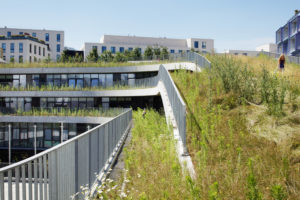
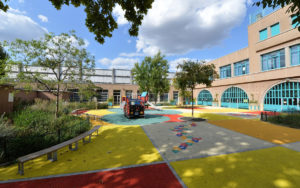
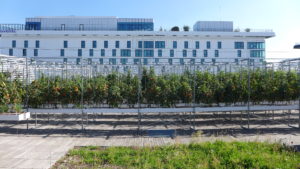
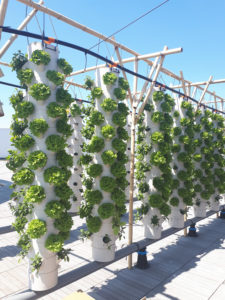
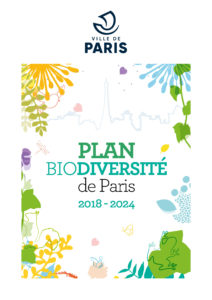





















Whoah, It’s great inspiration for reader that biodiversity is more important than anything.
this article make me know where the example oh biodiversity. thank you so much for inspiring your readers 🙂
Thank you for your comment.